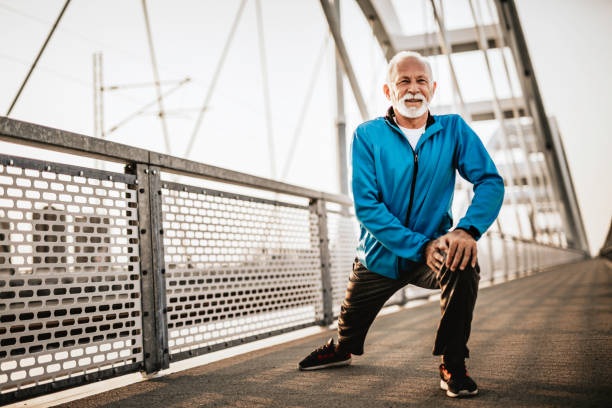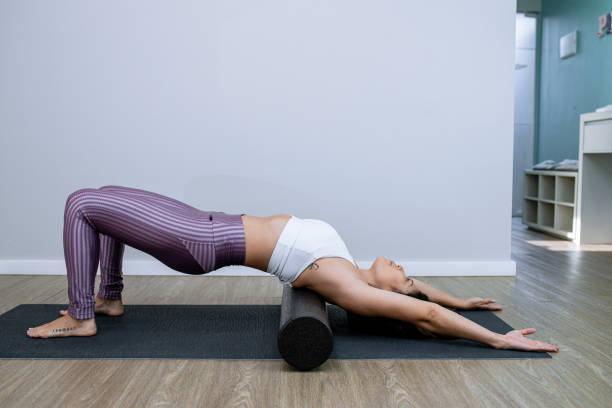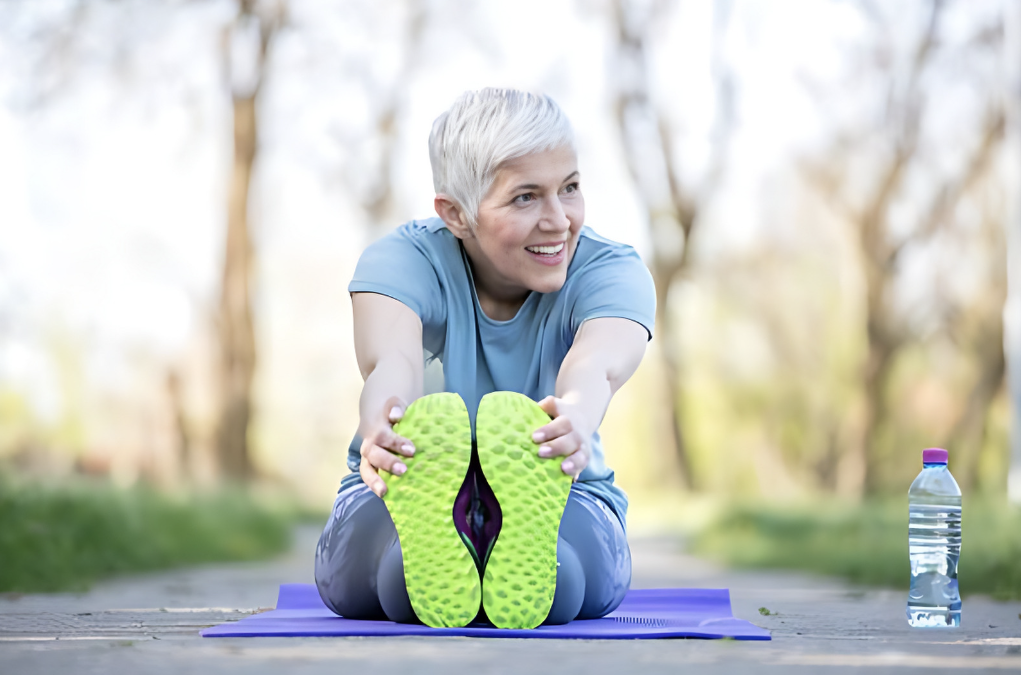Fitness Goals, Workouts
Boost Your Fitness Journey with Low Body Mobility Exercises
Improving mobility is critical for sustaining independence and overall well-being, especially as we age or suffer mobility issues as a result of injury or chronic disease. Low-body mobility exercises provide a targeted approach to improving flexibility, strength, and range of motion in the lower body, which includes the hips, knees, and ankles. Whether you’re healing from an accident, treating a chronic disease, or simply want to maintain mobility and avoid stiffness, including these exercises in your regimen can be quite beneficial.
In this article, we’ll look at a variety of low-body mobility exercises that can help you increase flexibility, stability, and function in your lower limbs. From mild stretches to strength-building exercises, we’ll present a thorough guide to help you improve your mobility and move more freely and confidently.

Understanding Low-body Mobility
Causes of Limited Mobility
Injury, aging, and discomfort are all potential causes of low body mobility. Sprains, strains, and fractures can reduce the range of motion and make movement difficult. Aging can also cause decreased mobility owing to normal wear and strain on the joints and muscles. Arthritis and chronic back pain can both generate pain that limits mobility.
Importance of Mobility Training
Mobility training is vital for increasing low-body mobility. It consists of exercises that work on developing a range of motion, flexibility, and strength. Regular mobility training can assist to prevent injuries, improve posture, and boost overall physical performance.
Before starting any new exercise regimen, you should contact your doctor, especially if you have limited mobility or a history of injury. A doctor can help you decide which activities are safe and helpful for your unique needs.
Some useful low-body mobility exercises are:
- Seated 90/90 Hip IR/ER with Reach.
- Back-to-Wall Shoulder Flexion Prying Squat
- Mini Band Overhead Reach.
- Passive Leg Lowering
- Mini Band Prone Floor Slide.
- Half-kneeling hip flexor stretch.
Including these exercises in your daily mobility training practice will assist enhance low-body mobility and prevent injuries.

Essential Mobility Exercises
Good mobility is critical to overall health and fitness. It enables people to walk freely and complete daily duties with ease. Here are some essential mobility exercises to increase lower-body flexibility and strength.
Hip and Ankle Mobility Workouts
Hip and ankle mobility exercises are essential for increasing lower-body flexibility. Tight hips and ankles can cause poor posture, lower back pain, and limited mobility. The exercises below can assist increase hip and ankle mobility.
Deep Squat: This workout requires squatting as low as possible while keeping your heels on the ground. It improves flexibility in the hip flexors, ankles, and calves.
Cossack Squat: This workout consists of squatting to one side while maintaining the other leg straight. It increases hip mobility and strengthens the glutes.
Ankle Circles: This workout consists of turning the ankles in a circular motion. It helps to increase ankle mobility and flexibility.
Exercises for Hamstrings and Calves
The hamstrings and calves are crucial muscles in the lower body for mobility and stability. Tight hamstrings and calves can cause poor posture and lower back pain. The following exercises can assist improve flexibility in the hamstrings and calves:
- Standing Hamstring Stretch: In this exercise, you stand with one leg straight and the other foot on a low surface. The individual then bends forward to stretch his hamstring.
- Seated Calf Stretch: In this exercise, you sit down with one leg straight and the other bent. The person then bends forward to stretch the calf.
- Downward Dog: This yoga pose stretches the hamstrings and calves while strengthening the arms and shoulders.
Strengthening the Lower Back and Glutes
A strong lower back and glutes are essential for maintaining proper posture and avoiding lower back discomfort. The exercises below can help strengthen the lower back and glutes:
- Bird Dog is an exercise in which you get on all fours and stretch one arm and the opposing leg. It helps to strengthen the lower back and glutes.
- Glute Bridge: In this exercise, you lie on your back with your knees bent and lift your hips off the ground. It helps to strengthen the glutes and lower back.
- Deadlift: This workout involves raising a weight off the ground with your back straight. It helps to strengthen the lower back and glutes.
Incorporating these vital mobility exercises into your training program can help you gain lower body flexibility and strength.

Incorporating Mobility into Your Routine
Mobility exercises are key components of every fitness plan. They aid in enhancing stability, balance, and flexibility, all of which are required to complete exercises with good form and technique. Incorporating mobility exercises into your program might help you avoid injuries and perform better overall.
Warm-Up and Cool-Down Techniques
Warming up properly is essential before beginning any exercise routine. This can include modest aerobic workouts such as jogging or jumping jacks, as well as mobility exercises that target the muscles you’ll be working out with. Warming up increases blood flow to the muscles, which helps to prevent injuries and improve performance.
After your workout, you should properly cool off. This may involve stretching exercises that target the muscles you utilize during your workout. Cooling down reduces the chance of injury and improves flexibility.
Building a Balanced Workout Routine
When developing a workout plan, it is critical to strike a balance between strength training, cardio, and mobility activities. A personal trainer or physical therapist can assist you in developing a fitness plan that is personalized to your specific needs and goals.
When introducing mobility exercises into your program, prioritize workouts that target the regions that require the most improvement. This can involve workouts for the hips, knees, ankles, and feet.
Here are some tips for including mobility exercises in your routine:
- Begin with basic workouts and progressively increase their intensity and length.
- To avoid injuries, maintain good form and technique.
- Incorporate a range of workouts that target different parts of the body.
- Listen to your body and modify your routine as needed.
Mobility exercises can help you enhance your overall performance while also lowering your chance of injury. You may reach your fitness goals with confidence and ease if you use effective warm-up and cool-down techniques and follow a well-balanced training routine.

Advanced Mobility Strategies
Progressions for Enhanced Flexibility
To avoid discomfort or soreness, increase flexibility gradually. A skilled trainer understands how to blend strength training with flexibility work for peak performance. Focusing on thoracic and shoulder mobility is critical for joint health and mobility.
A foam roller can help you increase your flexibility. Foam rolling can help relieve muscle tension and increase flexibility by releasing muscle adhesions. It is advisable to begin with a softer roller and eventually advance to a firmer one.
Resistance bands are another great method for improving flexibility. Resistance bands can be used to stretch muscles and increase joint mobility. One can begin with a lighter resistance band and progressively increase to a heavier one.
Overcoming Plateaus in Mobility Training
Overcoming plateaus in mobility training can be difficult, but it is critical to continue pushing oneself to achieve peak performance. One method for overcoming plateaus is to incorporate new activities into one’s program. Introducing new workouts can help you target different muscle groups and improve joint mobility.
Another strategy for overcoming plateaus is to increase the intensity of one’s exercises. Strength training routines can be modified by increasing the number of repetitions or sets, as well as the weight. It is critical to go slowly to avoid discomfort or soreness.
In conclusion, sophisticated mobility methods are required to reach peak performance. To maintain joint health and mobility, progress gradually and emphasis on thoracic and shoulder mobility. To overcome plateaus in mobility training, new exercises must be introduced and the intensity of existing activities steadily increased.
Conclusion
To summarize, targeting low-body mobility activities can have significant benefits for general health and quality of life. Targeted stretches and strength-building routines can help you enhance your lower body’s flexibility, stability, and range of motion. Whether you’re healing from an accident, managing a chronic disease, or simply looking to preserve mobility as you get older, these exercises can help you improve your physical function and reduce your risk of injury. Furthermore, frequent practice of low-body mobility exercises can improve posture, balance, and coordination, resulting in increased confidence and independence in daily tasks. Remember that consistency is essential, so make it a habit to incorporate these exercises into your daily routine to reap the long-term advantages of increased mobility and well-being.
Trusted Health, Wellness, and Medical advice for your well-being


